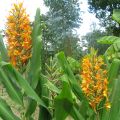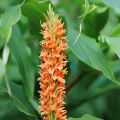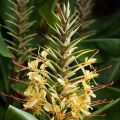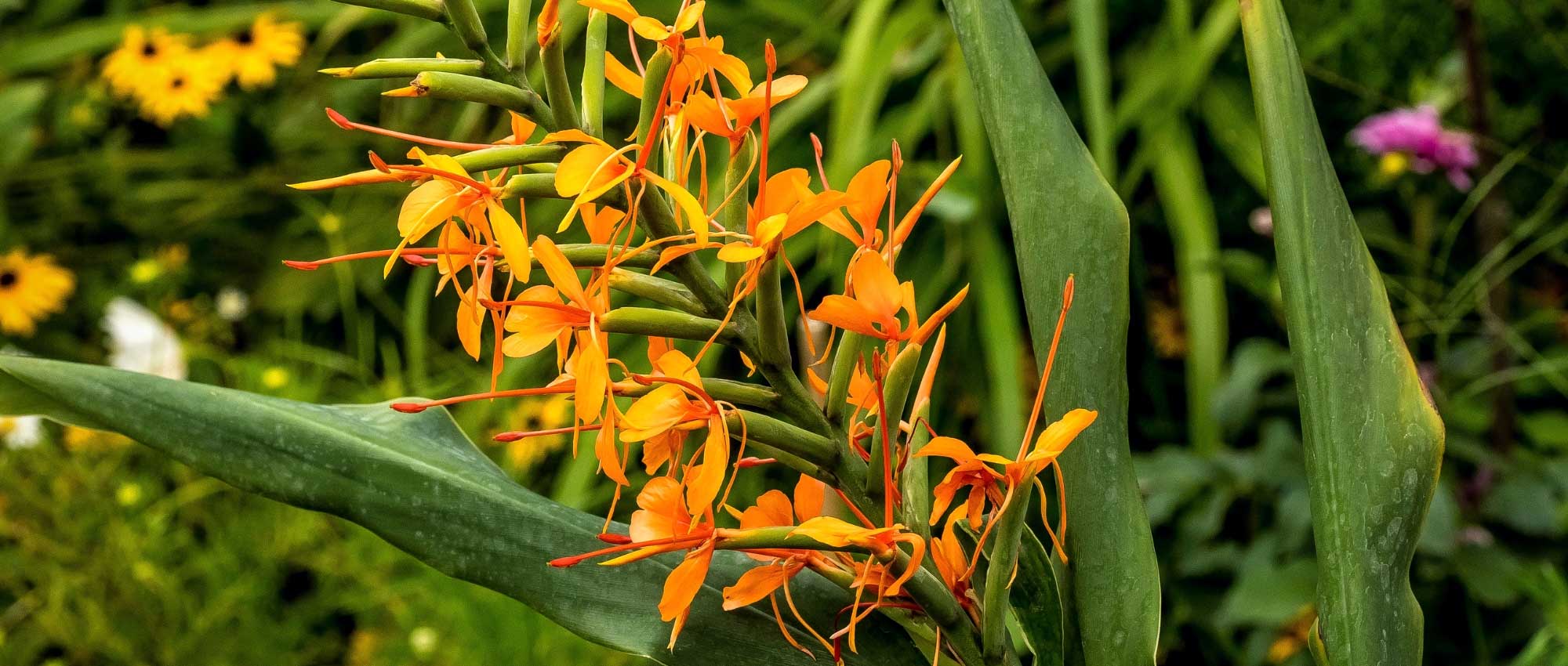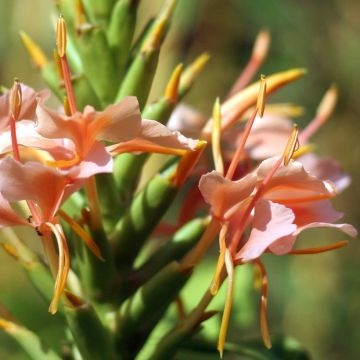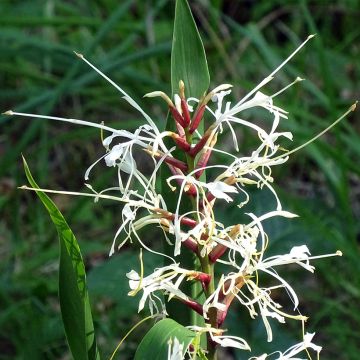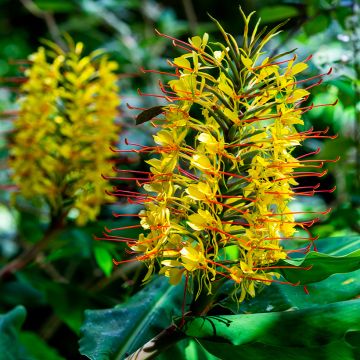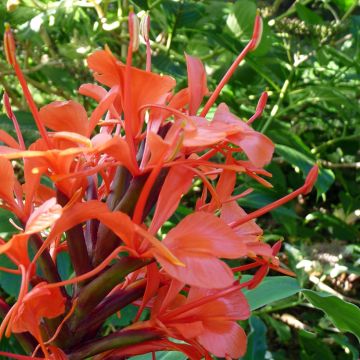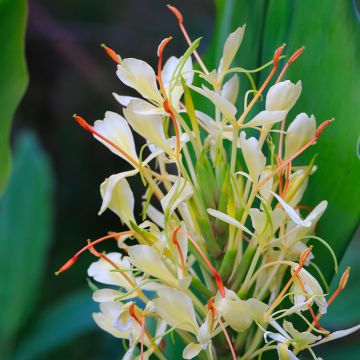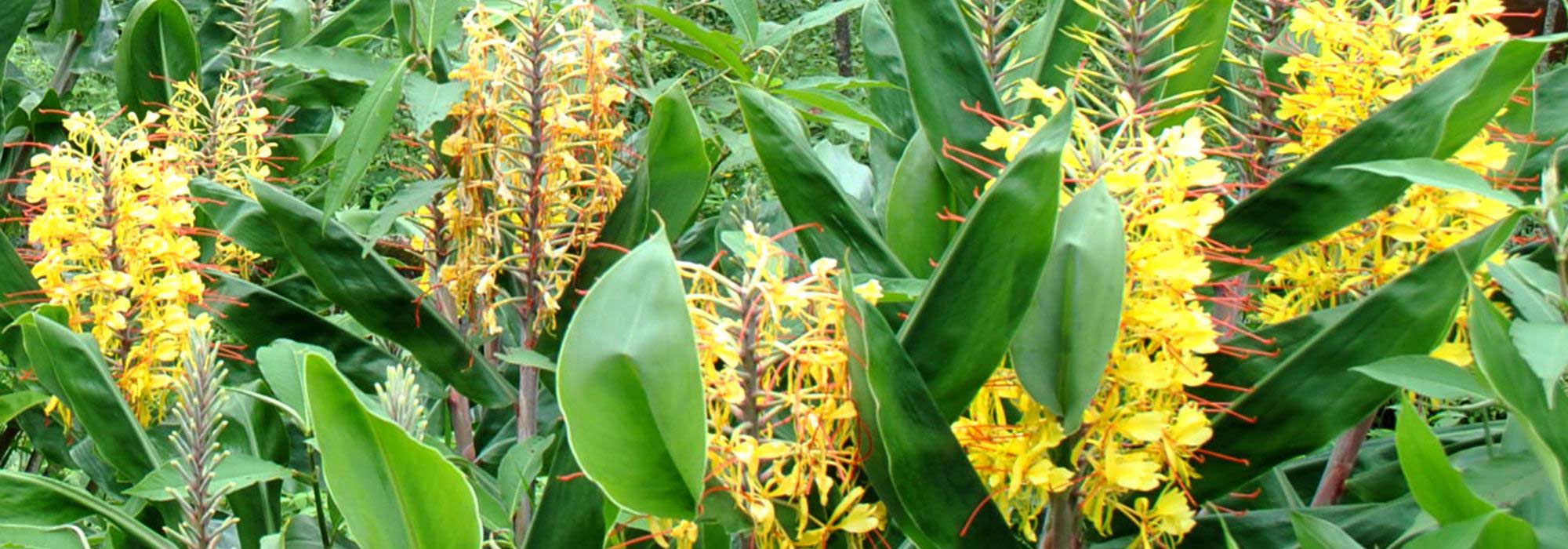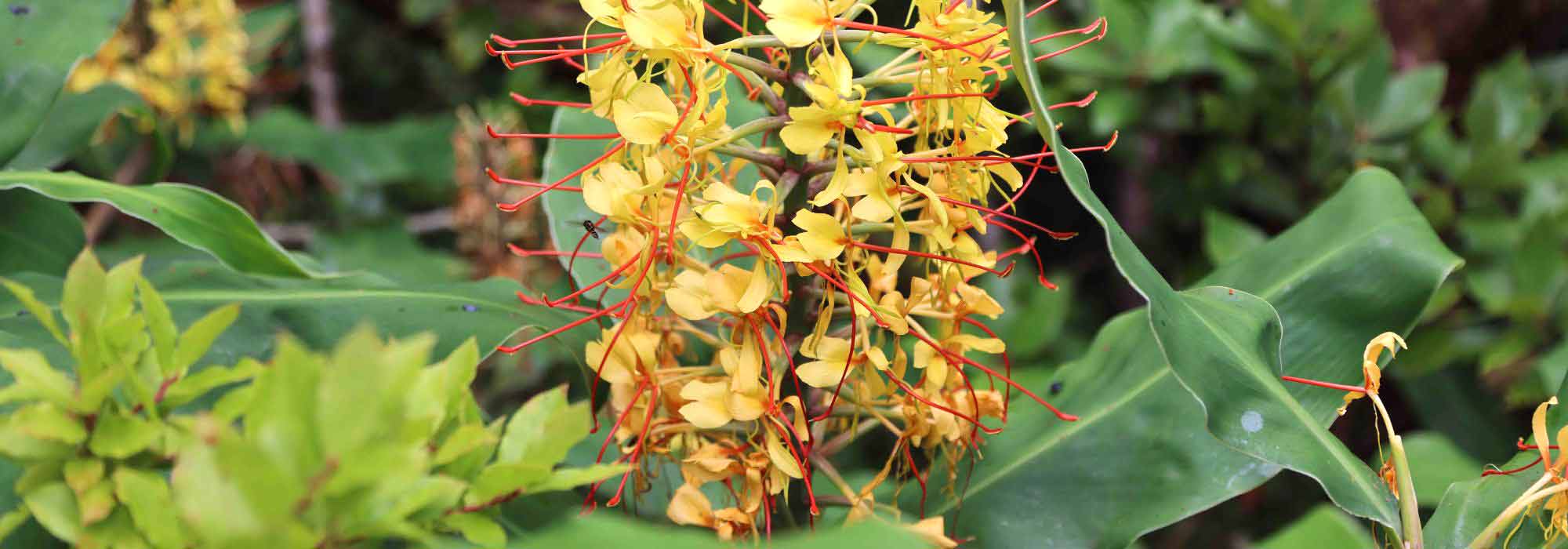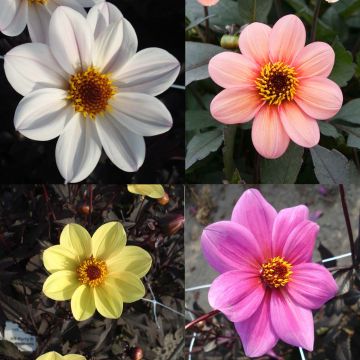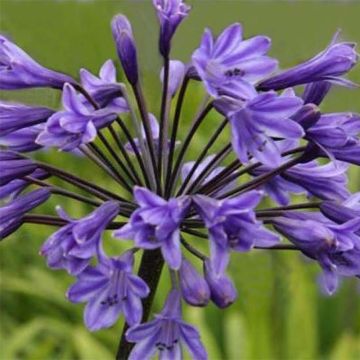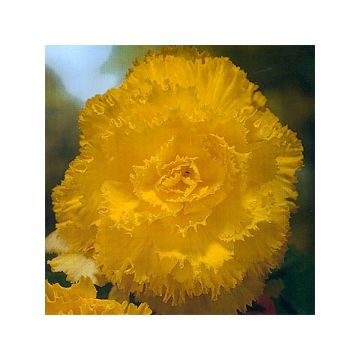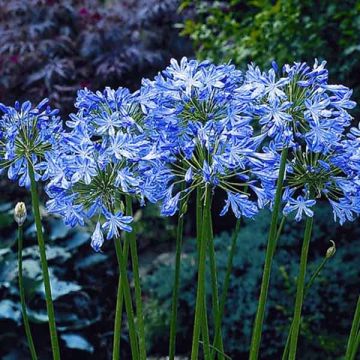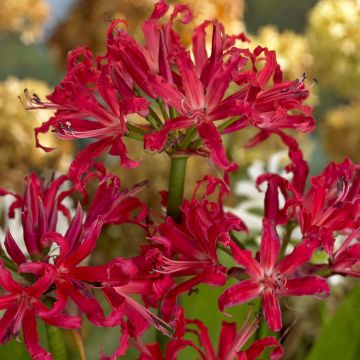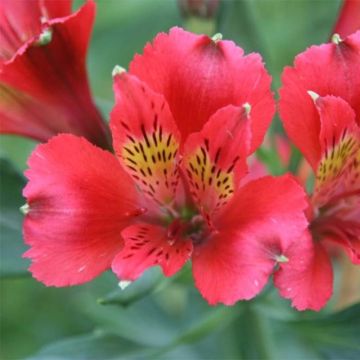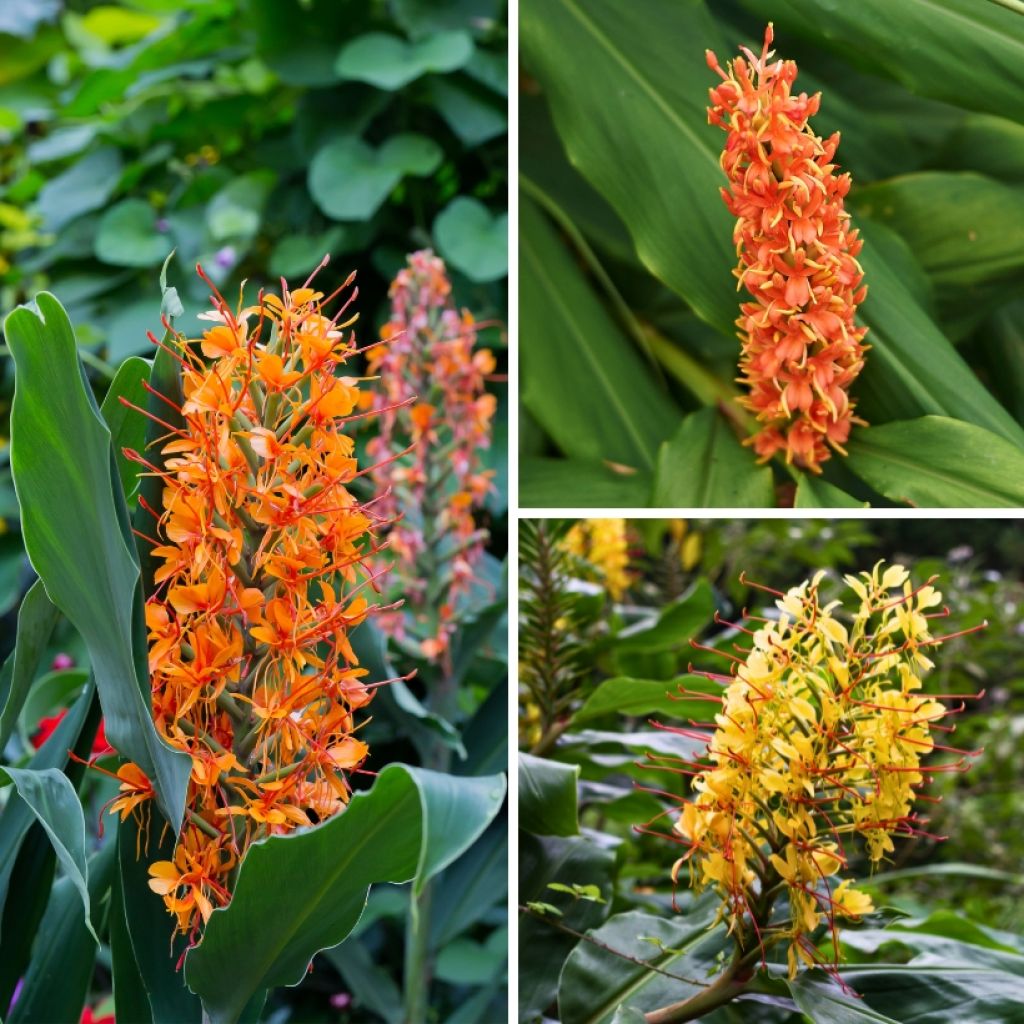

Hedychium Collection - Ornamental Ginger Lilies
Hedychium Collection - Ornamental Ginger Lilies
Hedychium
White Garland Lily
Special offer!
Receive a €20 voucher for any order over €90 (excluding delivery costs, credit notes, and plastic-free options)!
1- Add your favorite plants to your cart.
2- Once you have reached €90, confirm your order (you can even choose the delivery date!).
3- As soon as your order is shipped, you will receive an email containing your voucher code, valid for 3 months (90 days).
Your voucher is unique and can only be used once, for any order with a minimum value of €20, excluding delivery costs.
Can be combined with other current offers, non-divisible and non-refundable.
This plant carries a 6 months recovery warranty
More information
We guarantee the quality of our plants for a full growing cycle, and will replace at our expense any plant that fails to recover under normal climatic and planting conditions.
Would this plant suit my garden?
Set up your Plantfit profile →
Collection items (3 plants)
Description
This Hedychium Collection is made up of: Hedychium coccineum 'Tara', Hedychium densiflorum, and Hedychium gardnerianum, large exotic perennials known as Ornamental Gingers or Longoses. These native plants to tropical regions of Asia, are renowned for their exotic appearance and ability to adapt to various climates. They are appreciated for their spectacular fragrant flowering from August to October, as well as their lush deciduous foliage in winter. These rhizomatous plants grow well in rich, moist-remaining soil throughout the growing season, but with good drainage. They thrive in full sun or partial shade. Stunning in large pots or in a tropical-inspired border.
The collection consists of:
1 x Hedychium coccineum 'Tara': this variety of ornamental ginger reaches a height of 1.20 m (4ft), with spikes of fragrant yellow-orange flowers. It is distinguished by its glaucous foliage and good frost resistance, down to -15°C (5°F) under a thick protective mulch.
1 x Hedychium densiflorum: reaching a height of 1.30 m (4ft), this species produces dense spikes of orange or yellow flowers. Its shiny green foliage provides an attractive visual contrast. Its stump can withstand temperatures down to -10/-12°C (14/10.4°F).
1 x Hedychium gardnerianum: with a height of up to 1.50 m (5ft), this species known as "Kahili Ginger" is characterised by its lightly yellow flowers with red stamens, which are highly fragrant, and its abundant dark green and glossy foliage. It is slightly frost-sensitive (-7°C (19.4°F)).
Individually labelled.
Planting should be done in March or April, in humus-rich, moist, but well-drained soil. These plants can be grown in borders or containers. For Hedychium coccineum 'Tara' and H. gardnerianum, maintain a spacing of 60 cm (24in) from other plants, while for Hedychium densiflorum, allow for 80 cm (32in) due to its potential height. Taller plants, such as Hedychium gardnerianum, should be placed in the background for optimal visual effect.
In the garden, a tropical-inspired border can be created by combining these ornamental gingers with Salvia guaranitica 'Black and Blue', a Chinese windmill palm, a Japanese banana tree, against a backdrop of giant cannas.
Plant habit
Flowering
Foliage
Botanical data
Hedychium
Zingiberaceae
White Garland Lily
Cultivar or hybrid
Other Hedychium
View all →Planting and care
Hedychiums are plants that are more or less resistant to cold. As soon as the first frosts arrive, prune the foliage down to the ground and then mulch the stumps with a thick layer of dead leaves or fern fronds. You can also dig up the stumps and treat them like cannas. Choose a warm and sunny location, sheltered from strong winds. In partial shade, Hedychiums tend to grow taller. The soil should remain moist throughout the growing season, from spring until early autumn. A rich, deep soil with good drainage is best suited for them. They can also be grown in large containers. In this case, store the plant in a frost-free, bright, unheated area during winter. Watering should be reduced in winter and increased from spring to summer.
Planting period
Intended location
Care
Planting & care advice
This item has not been reviewed yet - be the first to leave a review about it.
Similar products
Haven't found what you were looking for?
Hardiness is the lowest winter temperature a plant can endure without suffering serious damage or even dying. However, hardiness is affected by location (a sheltered area, such as a patio), protection (winter cover) and soil type (hardiness is improved by well-drained soil).

Photo Sharing Terms & Conditions
In order to encourage gardeners to interact and share their experiences, Promesse de fleurs offers various media enabling content to be uploaded onto its Site - in particular via the ‘Photo sharing’ module.
The User agrees to refrain from:
- Posting any content that is illegal, prejudicial, insulting, racist, inciteful to hatred, revisionist, contrary to public decency, that infringes on privacy or on the privacy rights of third parties, in particular the publicity rights of persons and goods, intellectual property rights, or the right to privacy.
- Submitting content on behalf of a third party;
- Impersonate the identity of a third party and/or publish any personal information about a third party;
In general, the User undertakes to refrain from any unethical behaviour.
All Content (in particular text, comments, files, images, photos, videos, creative works, etc.), which may be subject to property or intellectual property rights, image or other private rights, shall remain the property of the User, subject to the limited rights granted by the terms of the licence granted by Promesse de fleurs as stated below. Users are at liberty to publish or not to publish such Content on the Site, notably via the ‘Photo Sharing’ facility, and accept that this Content shall be made public and freely accessible, notably on the Internet.
Users further acknowledge, undertake to have ,and guarantee that they hold all necessary rights and permissions to publish such material on the Site, in particular with regard to the legislation in force pertaining to any privacy, property, intellectual property, image, or contractual rights, or rights of any other nature. By publishing such Content on the Site, Users acknowledge accepting full liability as publishers of the Content within the meaning of the law, and grant Promesse de fleurs, free of charge, an inclusive, worldwide licence for the said Content for the entire duration of its publication, including all reproduction, representation, up/downloading, displaying, performing, transmission, and storage rights.
Users also grant permission for their name to be linked to the Content and accept that this link may not always be made available.
By engaging in posting material, Users consent to their Content becoming automatically accessible on the Internet, in particular on other sites and/or blogs and/or web pages of the Promesse de fleurs site, including in particular social pages and the Promesse de fleurs catalogue.
Users may secure the removal of entrusted content free of charge by issuing a simple request via our contact form.
The flowering period indicated on our website applies to countries and regions located in USDA zone 8 (France, the United Kingdom, Ireland, the Netherlands, etc.)
It will vary according to where you live:
- In zones 9 to 10 (Italy, Spain, Greece, etc.), flowering will occur about 2 to 4 weeks earlier.
- In zones 6 to 7 (Germany, Poland, Slovenia, and lower mountainous regions), flowering will be delayed by 2 to 3 weeks.
- In zone 5 (Central Europe, Scandinavia), blooming will be delayed by 3 to 5 weeks.
In temperate climates, pruning of spring-flowering shrubs (forsythia, spireas, etc.) should be done just after flowering.
Pruning of summer-flowering shrubs (Indian Lilac, Perovskia, etc.) can be done in winter or spring.
In cold regions as well as with frost-sensitive plants, avoid pruning too early when severe frosts may still occur.
The planting period indicated on our website applies to countries and regions located in USDA zone 8 (France, United Kingdom, Ireland, Netherlands).
It will vary according to where you live:
- In Mediterranean zones (Marseille, Madrid, Milan, etc.), autumn and winter are the best planting periods.
- In continental zones (Strasbourg, Munich, Vienna, etc.), delay planting by 2 to 3 weeks in spring and bring it forward by 2 to 4 weeks in autumn.
- In mountainous regions (the Alps, Pyrenees, Carpathians, etc.), it is best to plant in late spring (May-June) or late summer (August-September).
The harvesting period indicated on our website applies to countries and regions in USDA zone 8 (France, England, Ireland, the Netherlands).
In colder areas (Scandinavia, Poland, Austria...) fruit and vegetable harvests are likely to be delayed by 3-4 weeks.
In warmer areas (Italy, Spain, Greece, etc.), harvesting will probably take place earlier, depending on weather conditions.
The sowing periods indicated on our website apply to countries and regions within USDA Zone 8 (France, UK, Ireland, Netherlands).
In colder areas (Scandinavia, Poland, Austria...), delay any outdoor sowing by 3-4 weeks, or sow under glass.
In warmer climes (Italy, Spain, Greece, etc.), bring outdoor sowing forward by a few weeks.






























